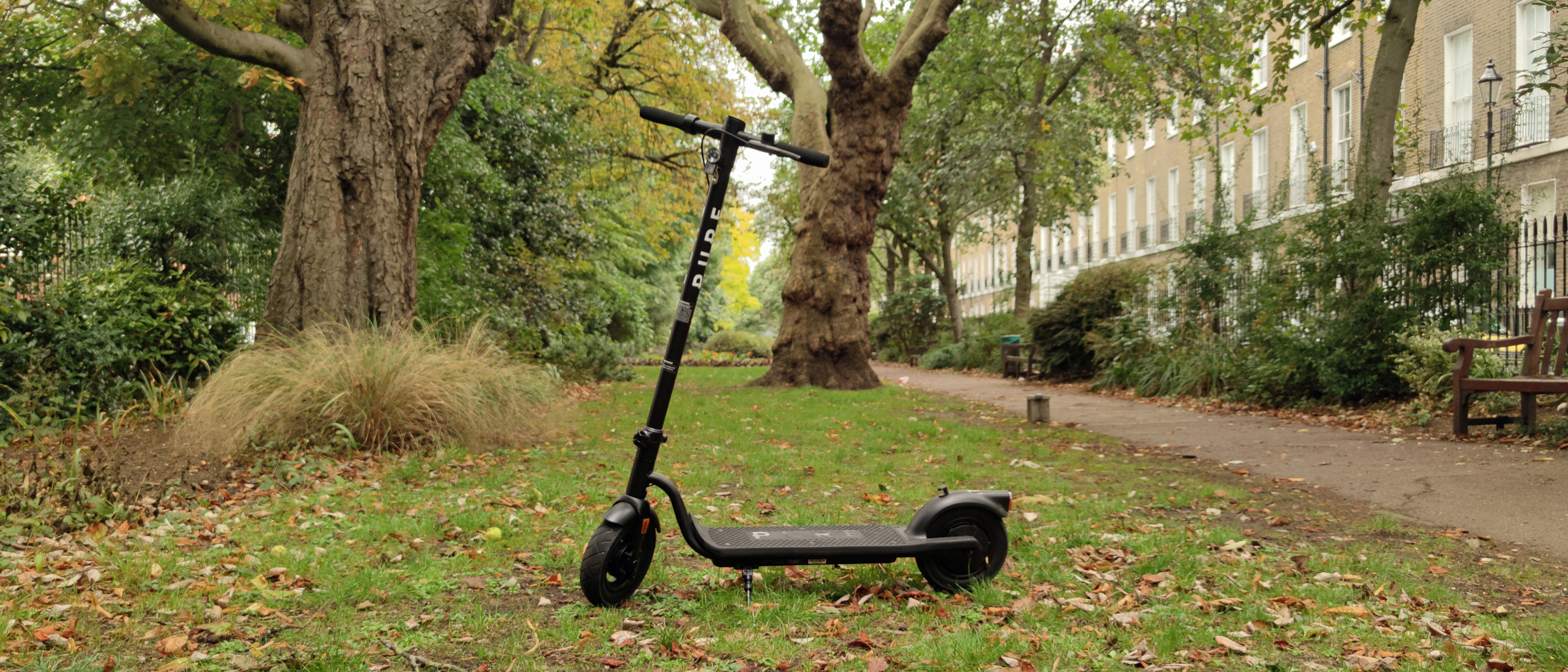TechRadar Verdict
The Pure AIr is the perfect entry-level scooter – it's affordable, feels sturdy and reliable to ride, and it’s pretty simple to set up. If you’re on the market for your first electric scooter, it should be the first one you consider, though some of its features don’t quite compare to mid-range and top-end scooters, including its Pro sibling.
Pros
- +
Low price
- +
Sleek look
- +
Sturdy build
Cons
- -
Quite heavy
- -
Doesn’t last long at top speed
- -
Hard to change speeds mid-ride
Why you can trust TechRadar
Two-minute review
It used to be quite hard to recommend the best electric scooter for someone who was looking for their first vehicle, since there were a few different products vying for that title, but the Pure Air makes the recommendation much easier - it should be the first scooter you consider
The Pure Air is a ‘standard’ version of the Pure Air Pro, which released about a month prior, and it's the best entry-level electric scooter on the market right now – one that will be our benchmark to compare future releases from various companies against.
The Pure Air is relatively cheap for an electric scooter at just £399 (about $520 / AU$720), so it’s great for people looking for their first vehicle who don’t want to break the bank on a pricier mid-range or top-end ride, but its various features and design elements tick all the key boxes.
Perhaps the best point is the Pure Air’s reliable and sturdy build - it has good suspension, large wheels, and easy-to-grip handles so you’ll feel safe riding it. That safety is doubly important at night, so it helps there’s an adjustable front light, as well as one on the back and reflectors on the wheel. It's fast to charge and easy to use too, making it great for people who aren't used to handling electric scooters.
The Pure Air has various speed modes going up to 15mph, the legal limit for scooters in the UK, so opting for this low-price scooter won't slow down your journey. Sure, going at the top speed will reduce your max distance quite a bit, and it can’t handle hills that well, but those are byproducts of a smaller motor than the Pure Air Pro's.
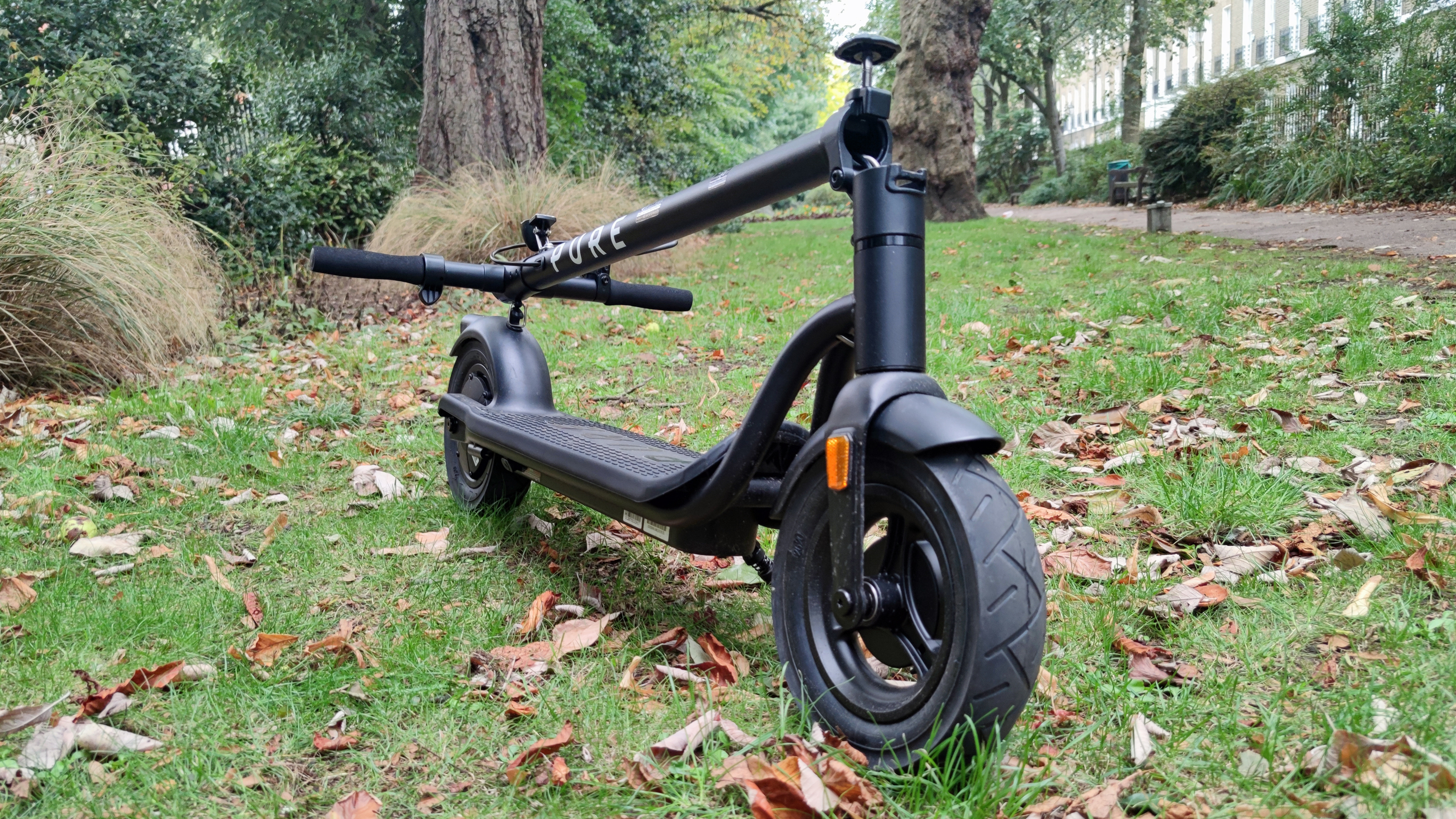
One other issue we have is that the Pure Air electric scooter is a little heavy: at 16.5kg it’s not easy to carry when you fold it down, but since the thing was designed to be ridden not carried, that won’t be an issue for all people.
Despite these few minor issues, the Pure Air is a fantastic ride, and it counters many of the issues we had with the Pure Air Pro, which was a great ride in itself. For people looking for an entry-level ride, we can’t recommend this scooter enough.
Sign up for breaking news, reviews, opinion, top tech deals, and more.
- These are the best electric scooters
Pure Air price and availability
The Pure Air costs £399 (about $520 / AU$720) in the UK. When we tested it there was only a black option available, but Pure told us a gray version is coming soon too.
For context, the Pure Air Pro launched for £679 (about $890 / AU$1,230), though that price dropped to £599 when the non-Pro model launched. For that extra cash, you get an improved motor, a longer-lasting battery and improved braking (though in practice we found the brakes equally good on both models).
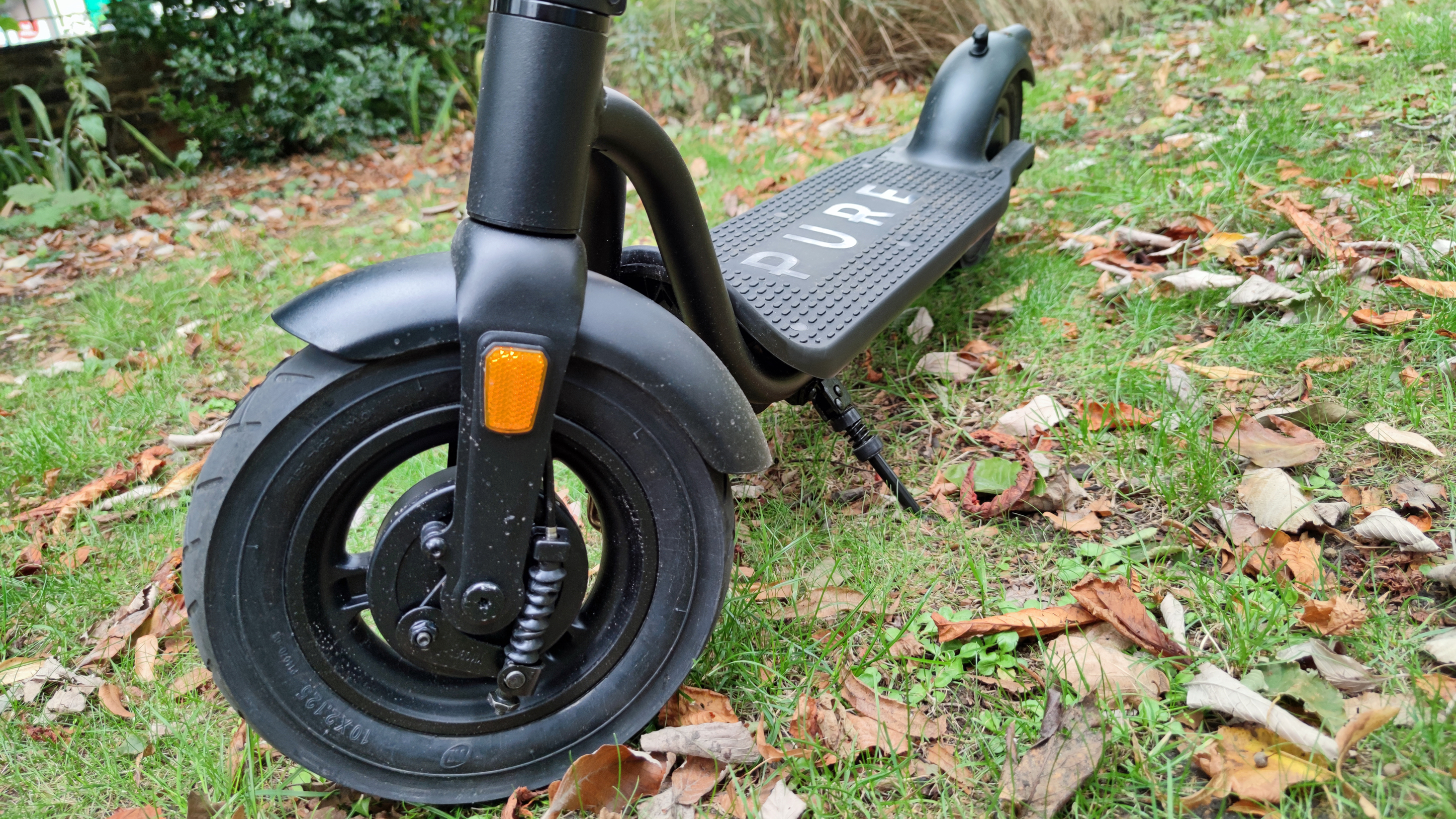
The Pure Air’s biggest competitor is arguably the Xiaomi Essential Electric Scooter, which costs the same, has a similar maximum range, the same motor power, a quicker charge time and a smaller build.
That smaller build means it’s less sturdy to ride, though, and the scooter is less waterproof, as you’re advised not to ride it in the rain or even get it wet. Suffice to say, if you live in the UK that might not work for you.
You can buy the Pure Air right now from the Pure website, though the company has plenty of brick-and-mortar stores too.
Design
The Pure Air is pretty big compared to other entry-level electric scooters – it has a base measuring 116 x 50cm and a height of 118.5cm, so it’s easy to get a comfortable footing on the board, and it has a maximum rider weight of 120kg.
On the handlebars you’ll find a brake on the left with a bell mounted on it, and a control panel mounted centrally (not sticking out on the right like on the Pure Air Pro). This certainly gives the scooter a sleeker look, and we liked its placement until we had to change speeds mid-ride and found it a little harder to stretch our thumb to its button.
The screen shows which speed mode you’re in, whether the lights are on, your current battery charge (rounded to fifths), the speed you’re traveling at, whether the scooter is connected to a phone via Bluetooth, and whether the scooter is locked. More on those two later.
There’s a single button at the bottom of the screen, which is a little hard to press on the fly, especially if you need to double-tap to change speed modes, but we got used to it.

The handlebars also have a front light mounted on them, which you can re-angle if you want it to point straight ahead or more towards the ground. We liked being able to do this, as it’s a feature we haven’t seen on an electric scooter before.
The board has textured padding so it’s grippy to stand on. Underneath it is a kickstand, which we found easy to kick open or closed with our foot, and the charging port.
The Pure Air's wheels are just like the Pro's, in that they’re 10 inches across and filled with air. This makes them slightly more suited for uneven surfaces than the typical 8-inch wheels you’ll see on electric scooters, and the puncture prevention fluid in them is a reassuring extra.
The Pure Air is IP-65 dust and water resistant, so it’ll be safe to drive on a drizzly day, which is more than you can say about some of its competitors. In fact, one of our test days took us through London streets through torrential rain, and the scooter performed admirably. The IP-65 reassures us there was no internal damage from this ride either.
Portability
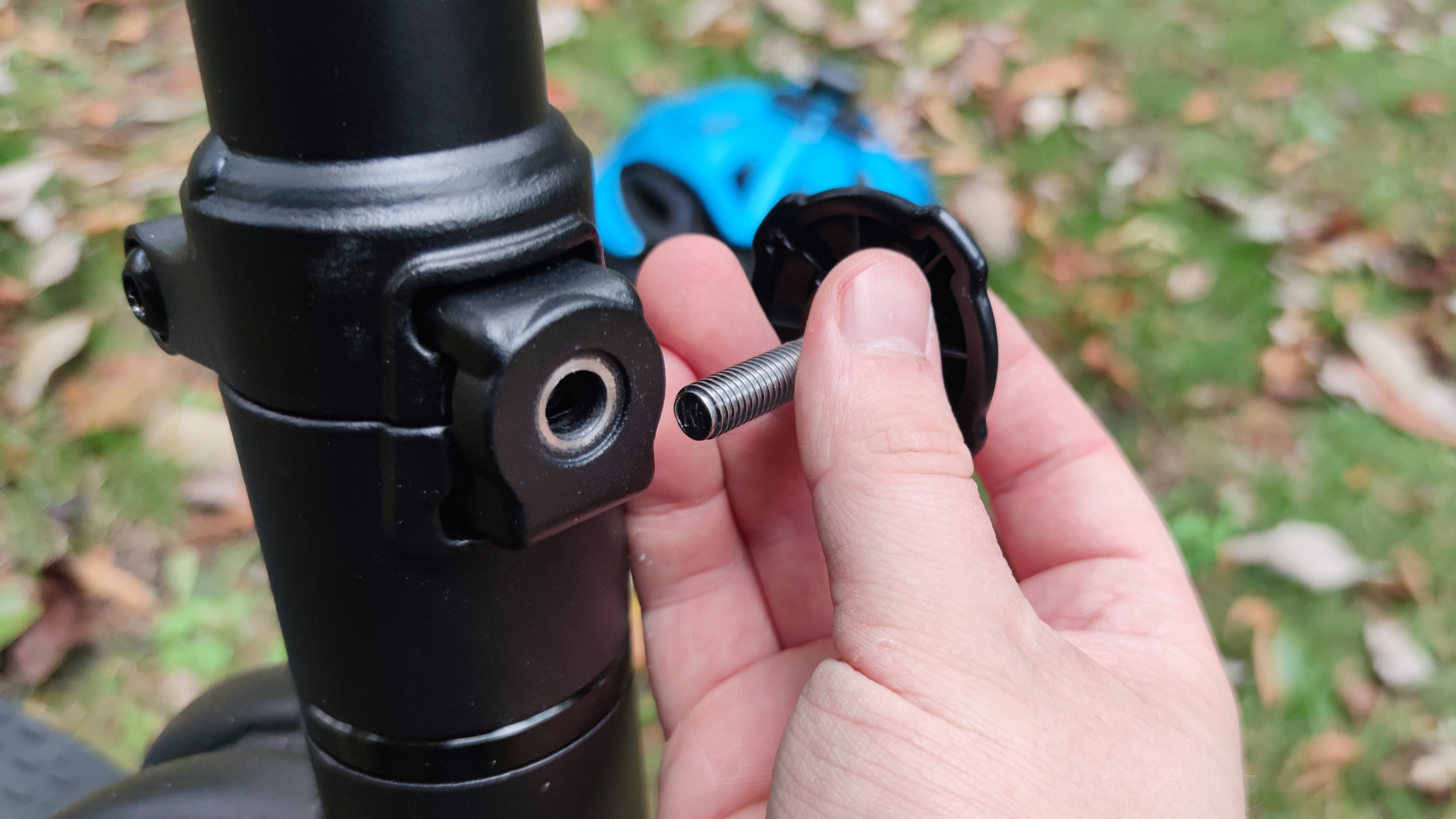
You can fold the Pure Air, but it’s a fiddly process compared to the easy catch on the Pro. To close it down you need to unscrew (by hand) a bolt that secures a metal U-shaped catch holding together the board and the bar.
This was a little time-consuming, and took us about a minute or so longer before and after a ride than an alternative system – and that was when the U-shaped catch didn’t get stuck, which happened on occasion.
When you’ve unscrewed that and attached the handlebars to the rear wheel with a small metal bar, you can pick up the Pure Air – but at 16.5kg, it’s not light. The Pro was 17kg, so it’s not the heaviest scooter we’ve seen, but compared other electric scooters that are about 12kg / 13kg, it was a burden. If you live on the top floor of your flat like us, you’re going to get strong carrying the scooter around.
As with most electric scooters, there’s nowhere you could put a lock to physically tie up the Pure Air, so unless you’re leaving it in a safe place, you’re going to have to use the app to lock it.
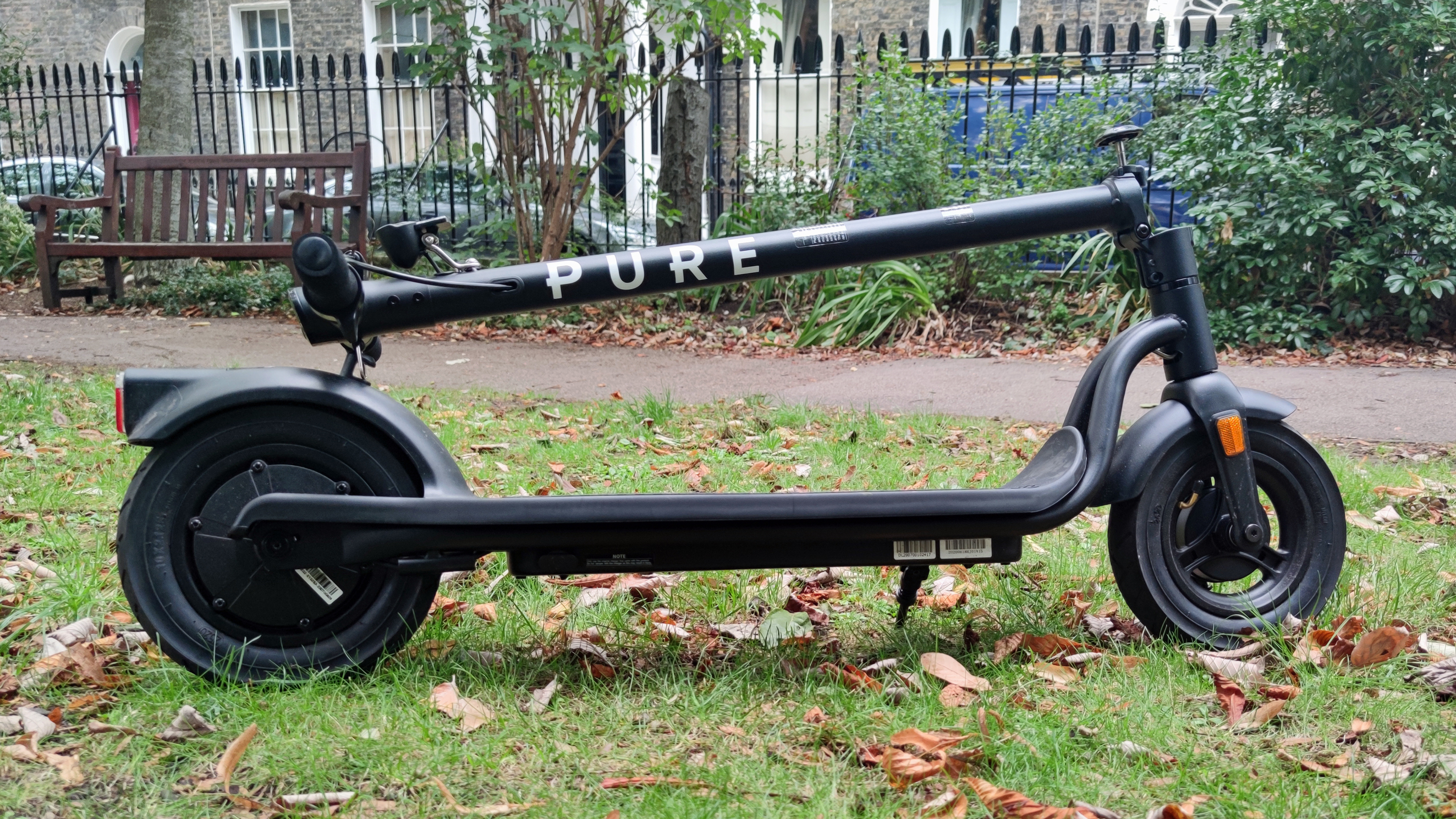
Battery
Pure pegs the Air’s maximum range as 30km, and from our testing, we’d concur with that estimate, although of course it depends on how you ride. That range would be for the slowest mode, which only reaches a max speed of 15kmph.
If you ramp up to the fastest mode, which hits 25kmph (or 15mph, which is the speed limit for electric scooters in the UK), the distance you’ll get before running out of battery seems to diminish much quicker. We don’t have an official estimate on the maximum range at this speed, but we found the battery dropped dramatically when speeding around like this, so we don’t think it’ll be near 30km. While riding around at top speeds can be super fun, it’s probably not recommended if you need to travel far.
We preferred the middle speed mode, which goes up to 20kmph. The battery seemed to last admirably going at this speed, and while again we don’t have an official measurement, it felt the maximum range could be close to that 30km.
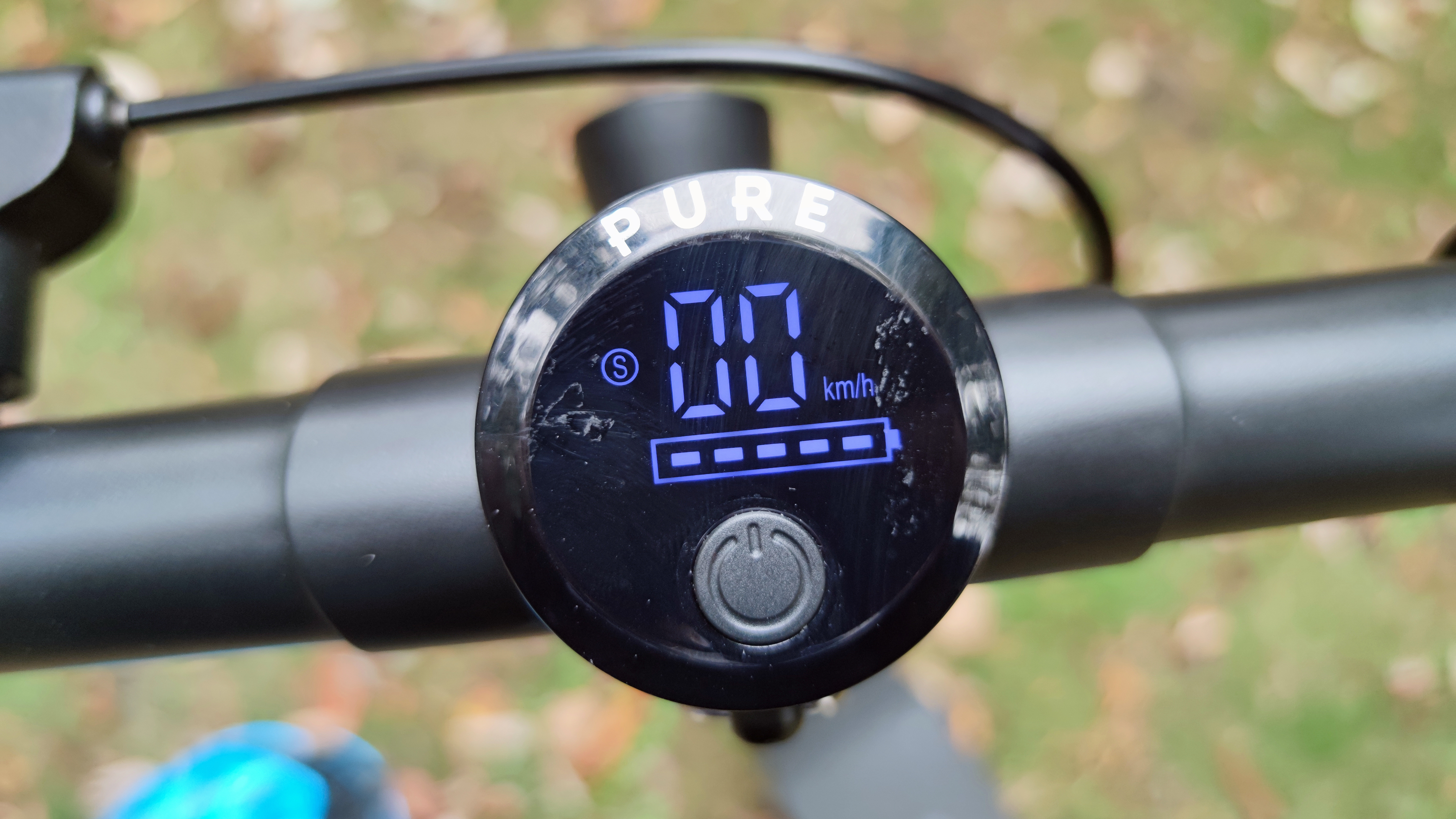
30km was the range on the fastest mode on the Pure Air Pro, and the other modes got you even further, but as long as you can reach your destination without running out of charge, a bigger battery doesn’t matter too much.
In terms of charging, Pure estimates it’ll take 4.5 hours to get the Air to full, which is the same as the Pro and faster than many other scooters, which take eight hours. We actually found it to be a little quicker than this, but there’s no harm in keeping it plugged in a little longer to make sure it’s completely charged up.
Riding
As we’ve said, there are three different speed modes: the slowest is capped at 15kmph, the middle goes up to 20kmph and the fastest will get you to 25kpmh. This is pretty standard for an electric scooter.
The motor here is 250W, slightly behind the 350W of the Pro, and this is most noticeable when going up hills. The Pure Air drops speed quite a bit when faced with an incline, and while it was never dramatic - it was usually only a few kmph, and never more than 6 or 7kmph for the steepest hill - if your commute takes you up steep hills, an entry-level scooter might not be for you.
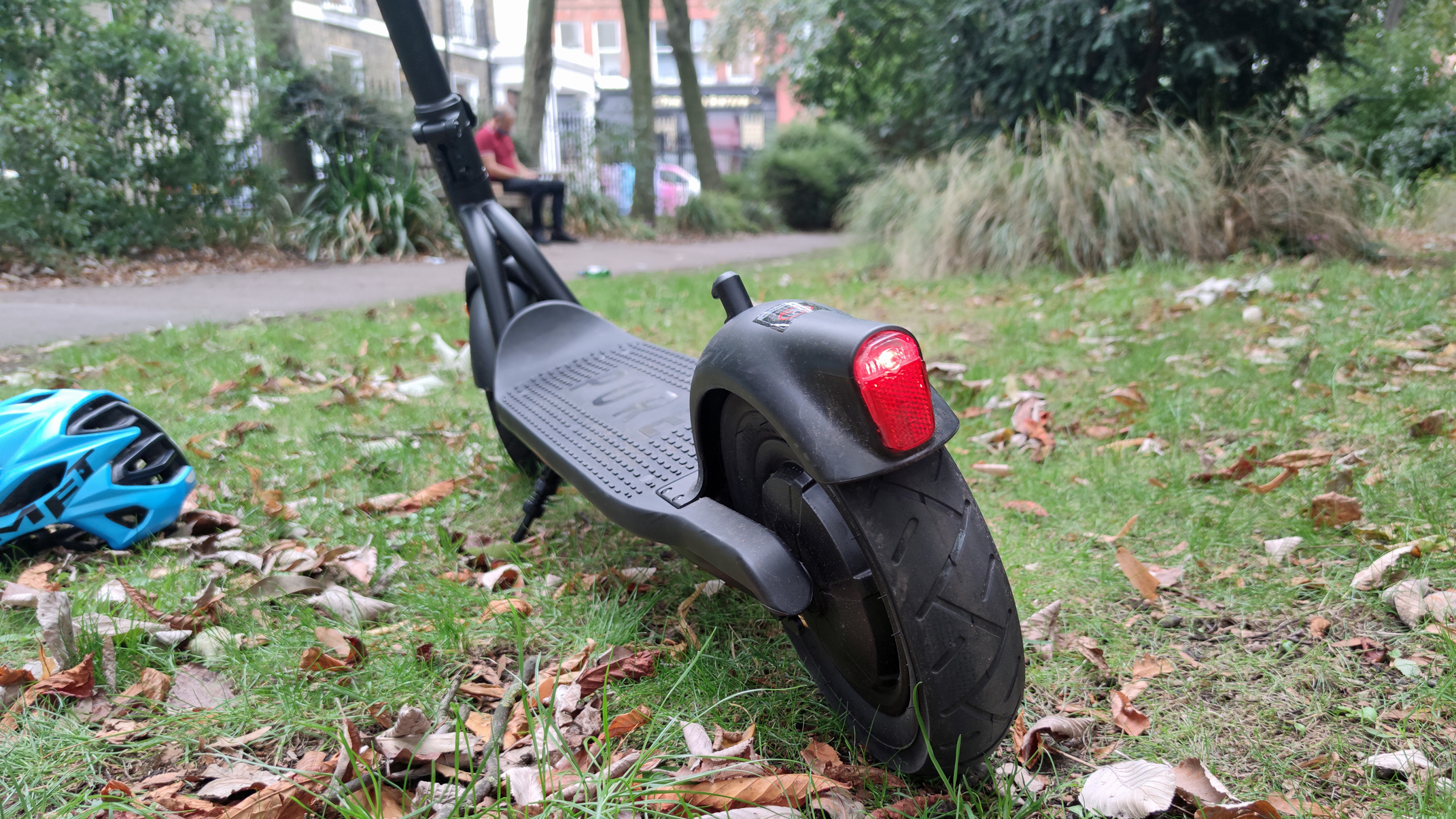
On flat terrain though, riding the Pure Air is a treat. Thanks to its suspension and tires, riding feels smooth on all but the bumpiest roads, and that terrifying handle-shake which affects certain scooters when you’re riding doesn’t rear its head.
Turning is rather easy too, and it felt like the Pure Air turned quicker with less of an angle than some other scooters, though this was not tested empirically.
As we’ve said, reaching the button isn’t always easy, especially when you need to double-tap twice in quick succession to change speed modes, but after a few hours riding we got the knack of it. There’s also the problem many electric scooters have, where you’re too busy holding the button to go that you can’t indicate with your arm to turn right. Some scooters have cruise control, but that has its own drawbacks.
The acceleration here is a little slow, but that isn’t a negative point – in fact we were fans of this feature. It ensures you don’t go zooming off as soon as you put your finger down on the button, as it’s easy to lose control that way. We always felt safe setting off with slower acceleration. You need to get the scooter moving at 5kmph manually for the button to work, which is easy to hit with one kick of your foot, though if you’re setting off uphill it might take more work.
The brake is in a convenient position to reach, and we found it generally reliable for stopping us within a few meters when squeezed.

App
There’s no tie-in app for the Pure Air just yet, but as the icons on the screen suggest, and as Pure has explicitly stated to us, there’s one coming very soon.
Scooter apps typically let you check the charge of your scooter and lock remotely, activate the lock so it can’t be ridden without your permission, as well as a few other functions.
When the Pure Air app is launched it could add a new layer of functionality to the scooter, though we didn’t feel it was necessarily lacking without it.
Should I buy the Pure Air?

Buy it if
You want an affordable scooter
The Pure Air is affordable compared to most other electric scooters, so if you don’t want to break the bank it’s one of the best choices for you.
You want a safe-feeling ride
The Pure Air won’t shake or rattle on bumpy roads like some other scooters will, and it feels sturdy when you’re riding, turning and braking, so it’s great for people who want to feel safe on the road.
You ride frequently at night
Like the Pure Air Pro, this scooter is bedecked with lights and reflectors, so you don’t have to buy your own if you ride frequently at night. Since the ride is sturdy too, you won’t be thrown off by unseen things on the road.
Don't buy it if
You want to ride fast and long-distance
On the Pure Air you’re going to be able to ride fast, or a fairly long way, but not at the same time - long-distance racers might be disappointed.
You can stretch to a pricier scooter
If your budget allows it, maybe consider the Pure AIr Pro instead – it’ll get you further on one charge, its screen is easier to reach, and its motor will get you up hills easier.
You might find yourself carrying the scooter far
Even if you’re pretty strong, since the scooter weighs a lot it can be a nuisance to carry around. If you’ll be carrying it up and down stairs a lot, or onto public transport, it may be annoying to carry.
- First reviewed August 2020
- Check out our complete guide to the best electric bikes
- Browse all the latest electric scooter sales

Tom Bedford joined TechRadar in early 2019 as a staff writer, and left the team as deputy phones editor in late 2022 to work for entertainment site (and TR sister-site) What To Watch. He continues to contribute on a freelance basis for several sections including phones, audio and fitness.
